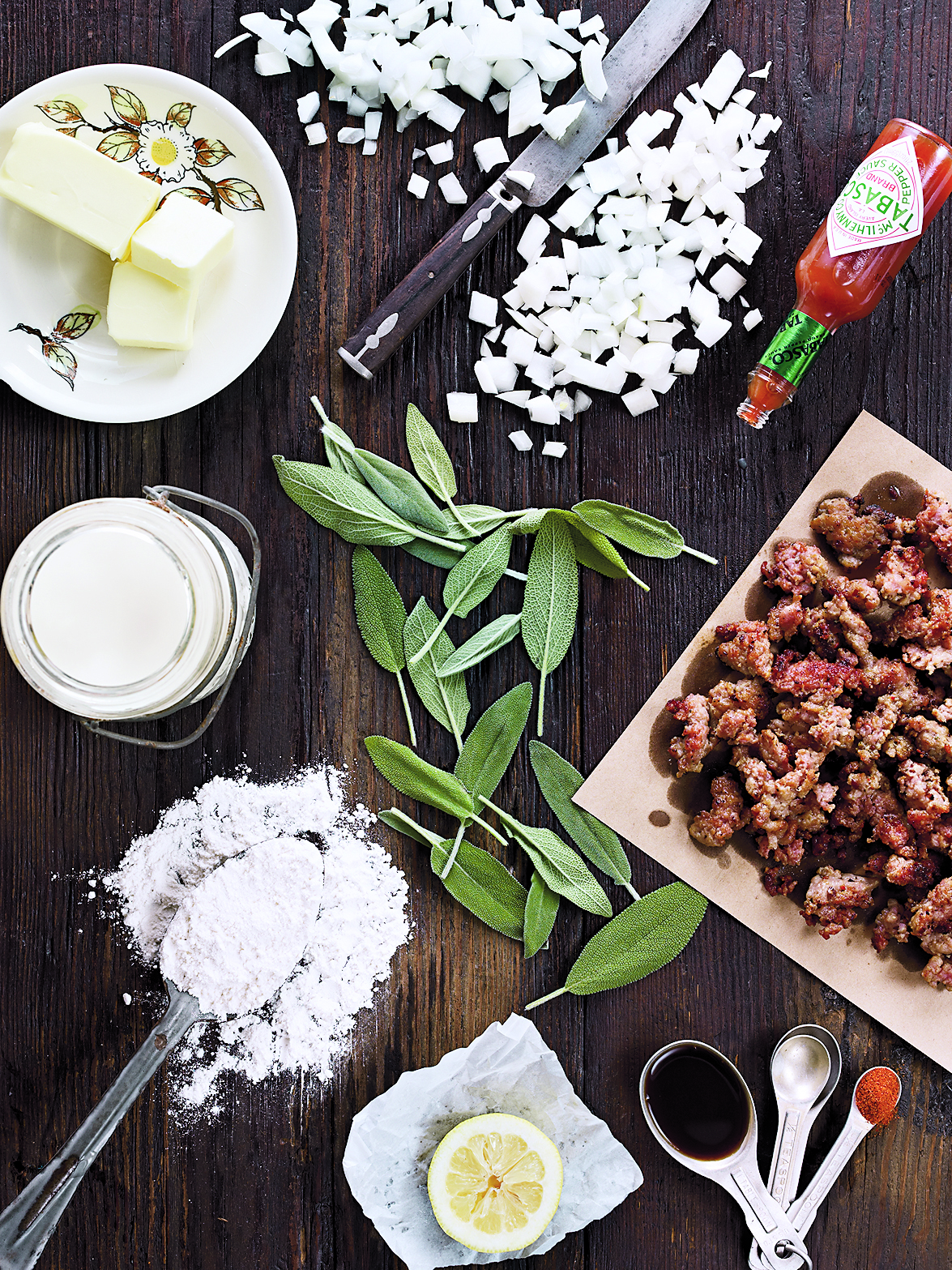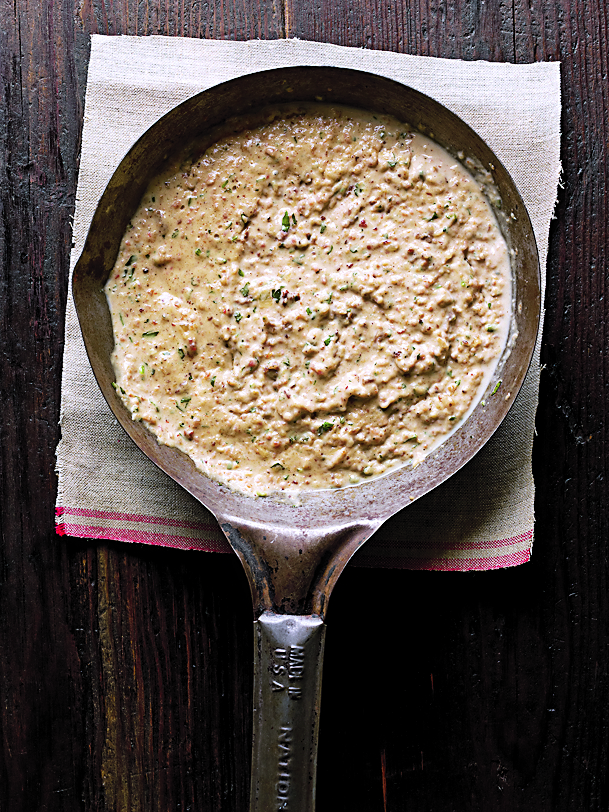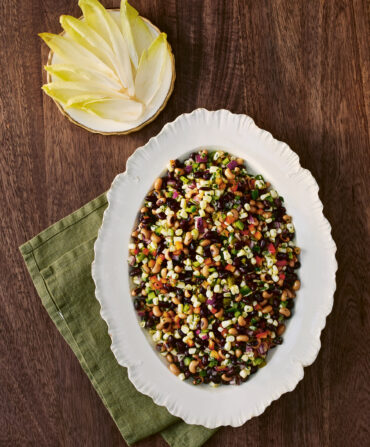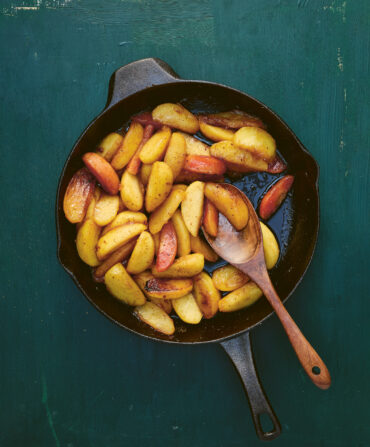If you ever want to eat like a lumberjack without doing a lick of work, you might stop by the Stoneleigh Hotel & Spa in Dallas and let Chef David Bull fix you a plate of savory biscuits smothered in sausage gravy.
Although food lore traces this countrified dish back to Appalachian logging camps—the reason for the term sawmill gravy—Bull has embraced it as part of his culinary signature. “I’ve put biscuits and sausage gravy on the menu at every Texas hotel restaurant where I’ve worked,” he says. “It’s warm and comforting, but also unexpected.”
Biscuits and sausage gravy will forever be regarded as a classic Southern workingman’s breakfast: hearty and inexpensive, with a tiny bit of meat able to feed a mess of laborers. In some parts of the South, the dish is still referred to as “poor-do,” which speaks to its economy, or “life everlasting,” testimony to its staying power.

Johnny Autry
Traditionalists will find it easy to spot Chef Bull’s refinements. Although “cat head” biscuits are typically pinched from the dough and dropped on the baking sheet by hand, the chef cuts his elegant version from rolled dough. Brushing the top of each biscuit with heavy cream before baking does more than bestow a glossy sheen. It creates a light crust that can hold its own against the gravy (without getting soggy) and keeps the interior layers tender and moist: “Like searing a piece of meat,” says the chef. Heavy cream also enriches the white gravy, while aromatic fresh sage leaves bring out the best in the fresh pork breakfast sausage, another staple of the Southern kitchen.
“We get a lot of international tourists at the hotel, and biscuits with sausage gravy represents a little bit of American culture for them,” Bull says. “They may not know the history. But it sure does brighten their day.”








